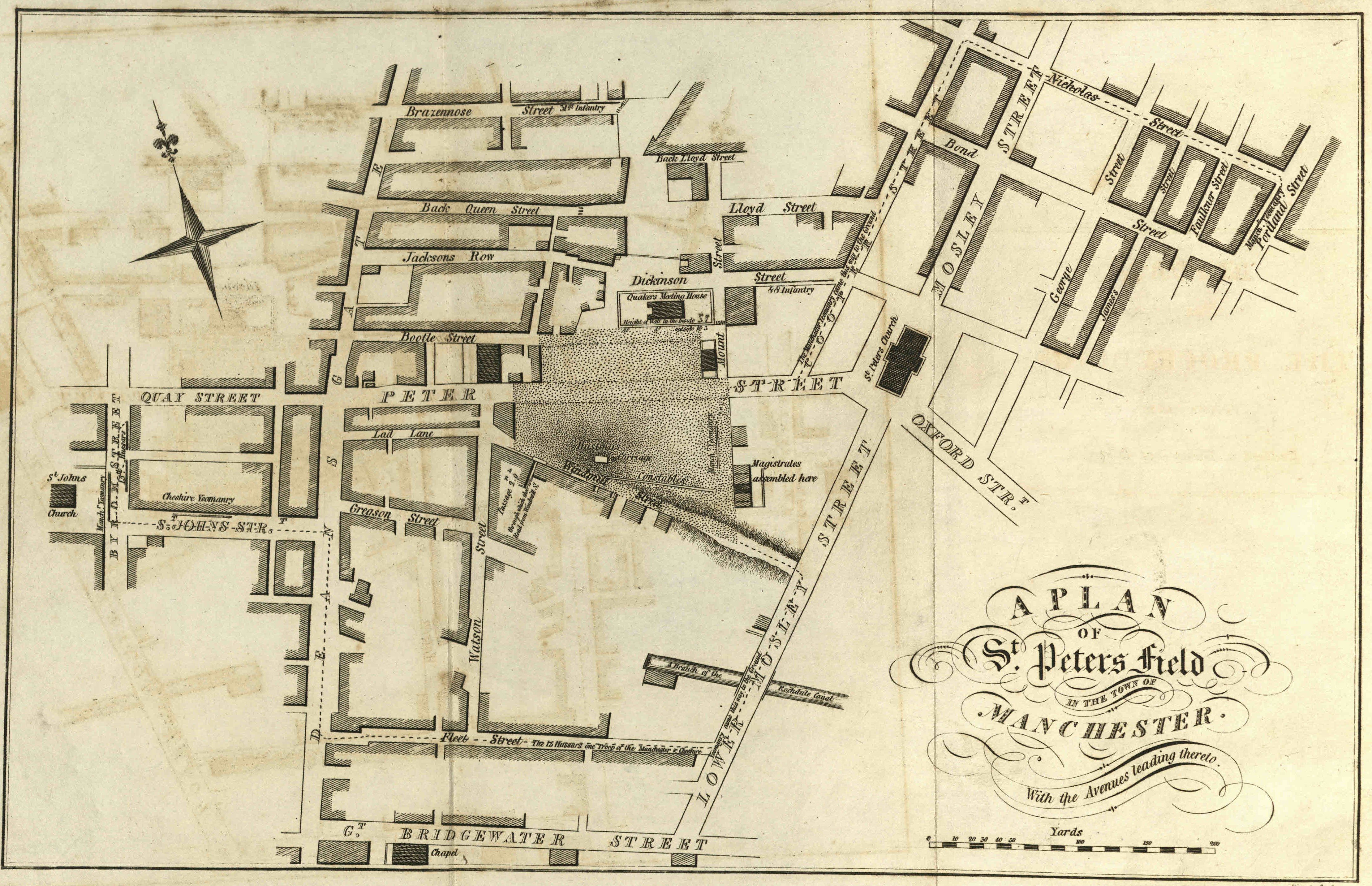Trial for an assault on the 16th of August 1819
On 16th of August 1819, an estimated 60,000-80,000 men, women and children gathered in St Peter's Field, Manchester, to attend a meeting in support of parliamentary reform to be addressed by the orator Henry Hunt. In the weeks before, contingents from local towns and villages had practiced marching on the moors to ensure that the procession would be orderly. As the day started there was a party atmosphere as groups paraded into the centre of Manchester, accompanied by music and carrying banners with slogans in support of universal suffrage and liberty.
Many in the local establishment regarded the reformers as a potentially revolutionary threat to the established order, and regarded the practices on the moors to be the drilling of a paramilitary army. In preparation for riot or armed rebellion, the Manchester magistrates had arranged for a large military contingent to be on standby, including members of the Manchester Yeomanry (a volunteer militia unit captained by a local millowner), the 15th Hussars (a regular army unit) and the Cheshire Yeomanry (another local militia unit). Despite the peaceful conduct of the gathering, local magistrates read the Riot Act and sent in the Manchester Yeomanry, on horseback and armed with sabres, to arrest the speakers. As the crowd panicked, the Chairman of the magistrates sent in the 15th Hussars and Cheshire Yeomanry, to 'rescue' the Manchester Yeomanry from the unarmed demonstrators. Individuals holding banners were particularly targeted by the swordwielding cavalrymen.
The total number of deaths caused by the events in St Peter's Field is unknown but is estimated to be between 10-20, hundreds more were injured. The first casualty of the day was a 2 year old child - William Fildes - killed after he was knocked from the arms of his mother by a member of the Manchester Yeomanry.
The immediate government response to Peterloo was to crack down on dissent by passing six punative laws - the Training Prevention Act (making non-governmental military training illegal), the Seizure of Arms Act (giving local magistrates the right to search private property for weapons, including powers of confiscation and arrest), the Misdemeanors Act (speeding up court proceedings), the Seditious Meetings Act (criminalising public meetings of more than 50 people on "church or state" matters unless they had authorisation from a magistrate), the Blasphemous and Seditious Libels Act (increasing sentences for writers), and the Newspaper and Stamp Duties Act (increasing and extending taxation on newspapers and journals). Leading figures involved with the St Peter's Field meeting, including James Wroe, editor of the Manchester Observer, and Henry Hunt, the headline speaker, were arrested and convicted of sedition. Ordinary demonstrators could also suffer retribution - cases of refusal of medical treatment and dismissals from employment were cited in the aftermath of the massacre.
Newspapers, including The Times, had reporters present at St Peter's Field and as reports of the massacre spread public condemnation was widespread. The name 'Peterloo', mockingly coined by James Wroe, was used to contrast the actions of soldiers at the Battle of Waterloo in 1815 with the events four years later at St Peter's Field. Critical pamphlets, such as those issued by William Hone, sold widely and commemorative souvenirs - including handkerchiefs, pottery and medals - were bought as symbols of support for reform.
In 1822 Thomas Redford, a Middleton hatter, brought a court case against members of the Manchester Yeomanry for injuries from a sabre received during the Peterloo Massacre. The trial became, in effect, a public enquiry into the events of 16 August 1819. The published report of the case includes detailed eyewitness statements by participants on both sides and a map (shown below) of the site. The defendants were found not guilty, as the public meeting at St Peter’s Field was considered to be an illegal gathering, and their costs were found by the government. This copy of the report is included in the University of Warwick Library Special Collections; (reference: DA 537 R3), and can be read in full through Warwick Digital CollectionsLink opens in a new window.

